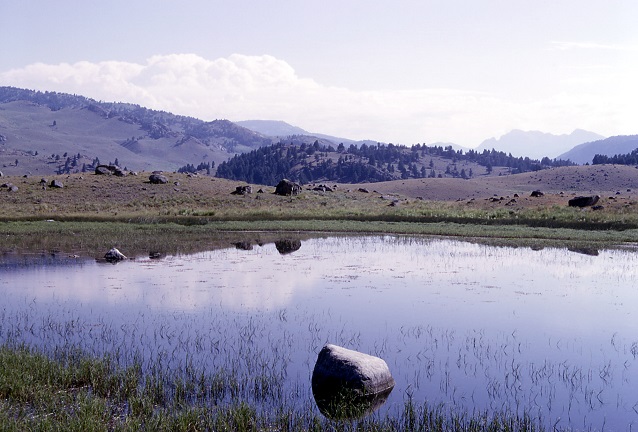
NPS Photo/John Good
As a glacier recedes, sediment is washed out from the glacier and deposited in a flat area below, forming an outwash plain. Depressions, known as kettles, often pockmark these outwash plains and other areas with glacial deposits.
Kettles form when a block of stagnant ice (a serac) detaches from the glacier. Eventually, it becomes wholly or partially buried in sediment and slowly melts, leaving behind a pit. In many cases, water begins fills the depression and forms a pond or lake—a kettle. Kettles can be feet or miles long, but they are usually shallow.

NPS Photo/Jacob W. Frank
To learn more about glaciers, glacier features, and glacial landforms, see the Glaciers & Glacial Landforms Page.
Part of a series of articles titled Glacier Landforms.
Previous: Paternoster Lakes
Next: Drumlins
Last updated: February 22, 2018
